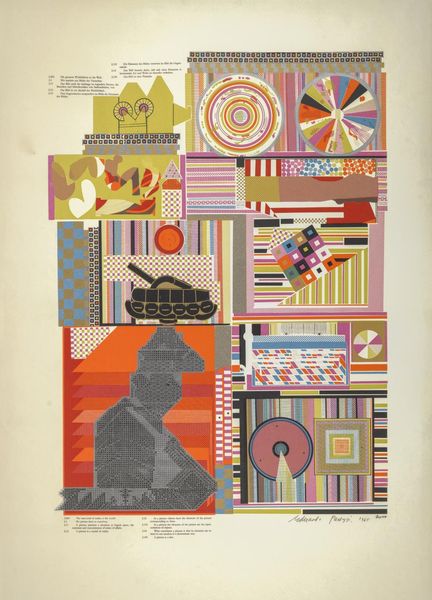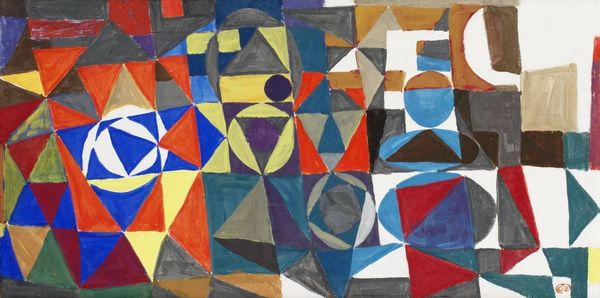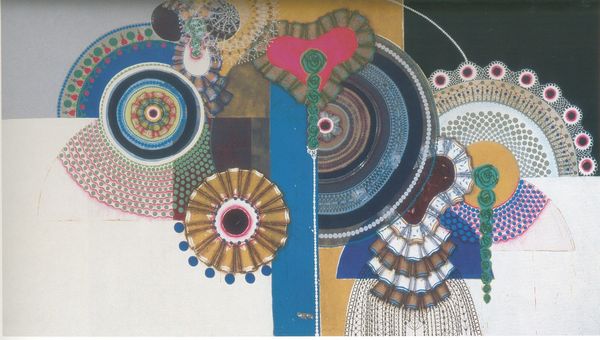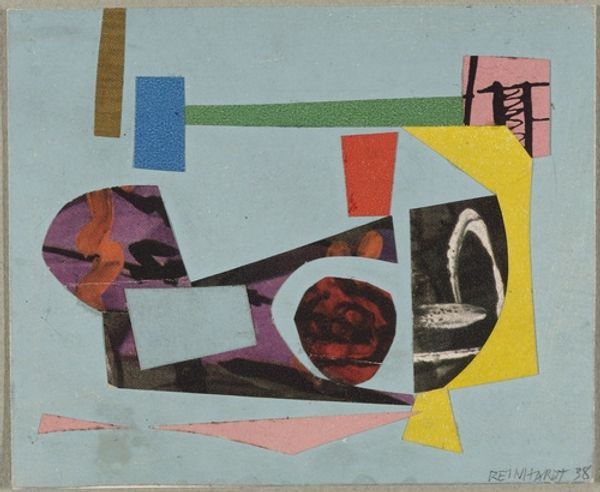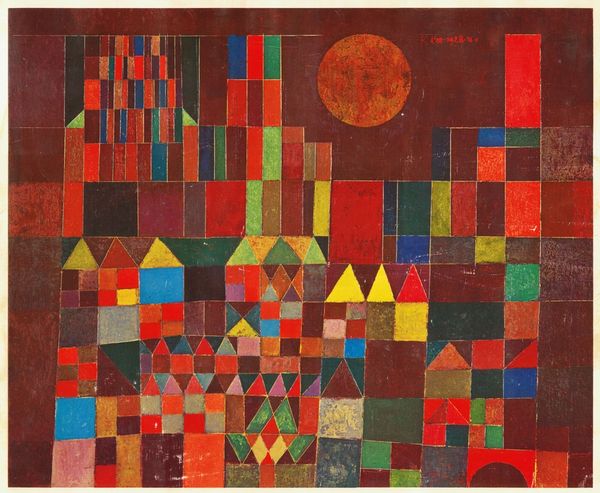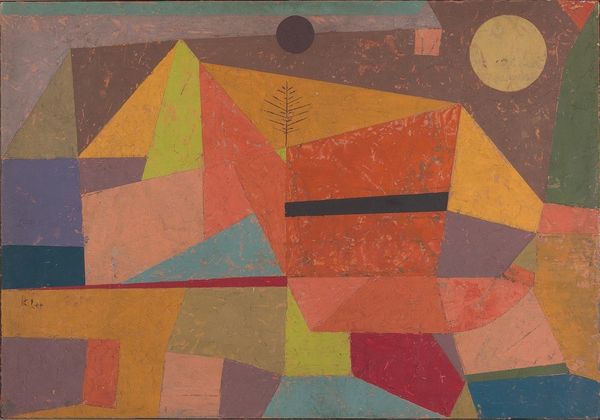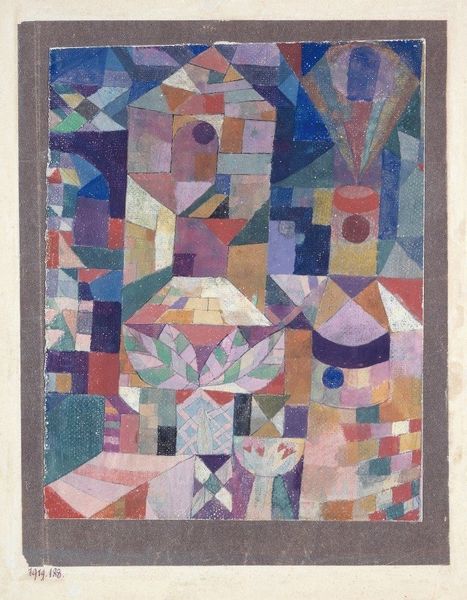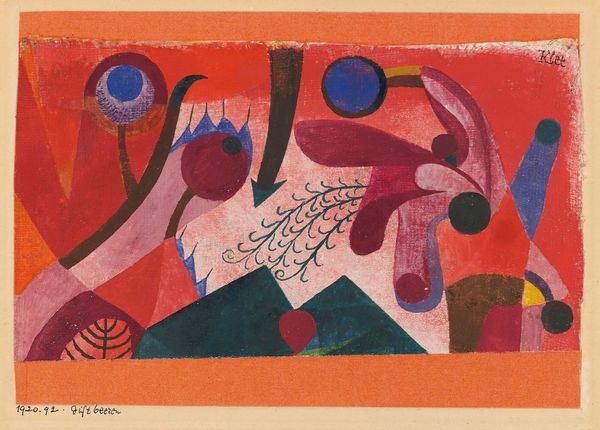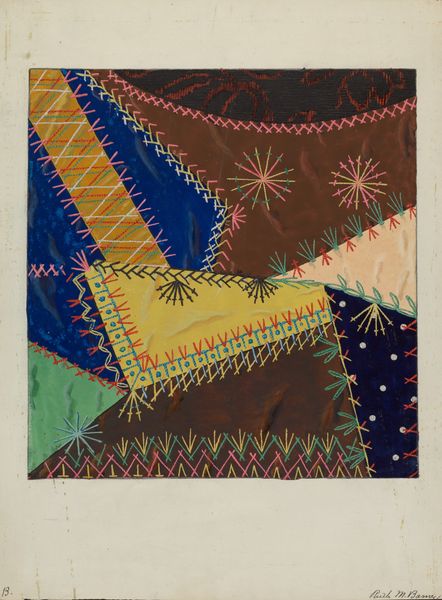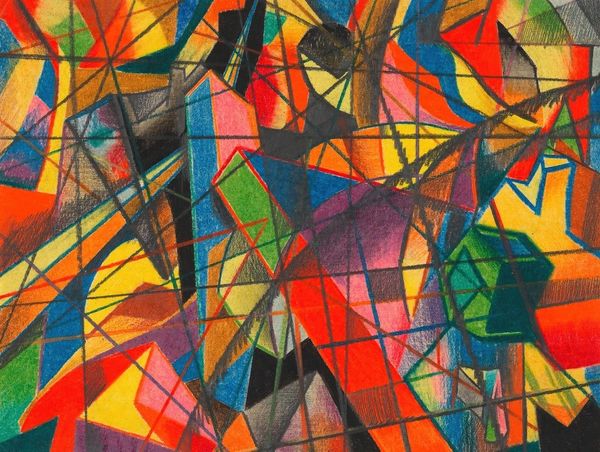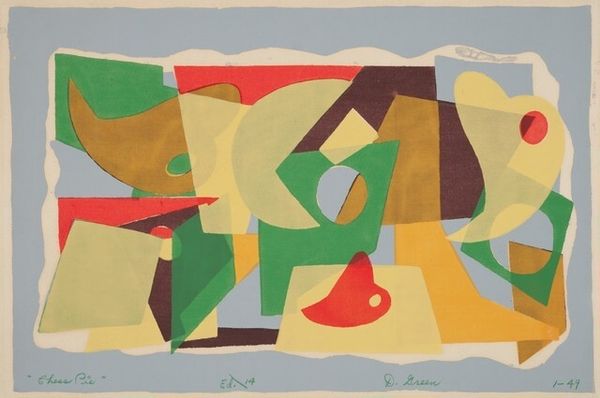
collage, watercolor
#
collage
#
abstract
#
watercolor
#
geometric
#
abstraction
#
watercolour illustration
#
bauhaus
#
modernism
#
decorative art
#
watercolor
Copyright: Public Domain: Artvee
Curator: Looking at this lively composition by Lászlò Moholy-Nagy, titled "Untitled," created around 1920, what strikes you first? It combines collage elements with watercolor. Editor: It has an immediate chaotic, almost jazzy feel. The angular forms and array of colors make it seem almost unstable. I notice what seems to be the letter 'J' at the bottom, like it's been interrupted mid-sentence. Curator: The influence of the Bauhaus is certainly present. Moholy-Nagy was teaching there around this time, exploring material experimentation and new methods for artistic production. His teaching emphasized art's intersection with industrial design, and one could see those gears, the implied motion in them. Editor: Gears… right, they're like wheels. The use of watercolor, alongside the cut-and-pasted papers, complicates it further. Was this piece part of a wider project to change design through watercolor or printed items? And how were works like this exhibited? They feel rather avant-garde, but were they showcased among the applied arts of the time? Curator: Moholy-Nagy was indeed interested in dismantling hierarchies between fine art and design, pushing the boundaries of traditional artistic categories. The work asks us to look closely at its constituent parts: the commercially available papers he selected, their textures, the watercolor washes adding another layer. Editor: The "unfinished" quality also appeals, resisting a conventional artwork display and engaging new art buyers of the time. Do we know more about the purpose of pieces like this, if it were experiments or were these destined to remain independent artworks in galleries or artist studios? Curator: Records point towards the idea that works like this, by actively resisting the classical academic model, democratize the artwork for people and give power to new means of fabrication, not handwork. Editor: Considering his commitment to accessible design, and its relationship to political ideologies in post-war Europe, I see more intention behind its design, as opposed to a sketch. It's a piece that rewards closer attention. Curator: Exactly! It is an intersection of art, process and intent and makes us look at everyday things and material usage differently.
Comments
No comments
Be the first to comment and join the conversation on the ultimate creative platform.
